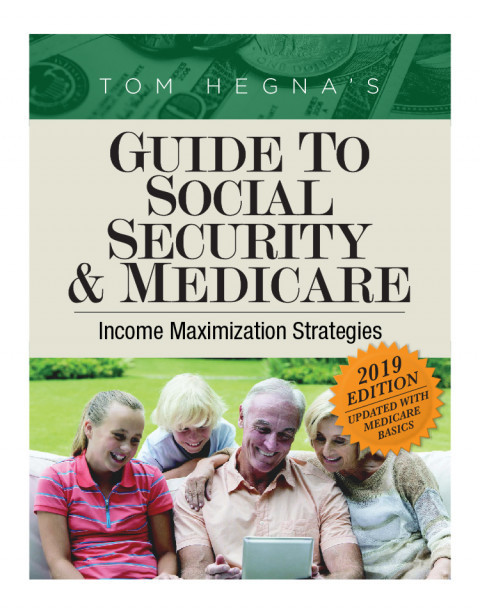Don't Retire Without One
F
ew financial advisors have made the transition from accumulation to distribution. They still use systematic withdrawals from diversified portfolios or bond ladders to provide income. These investment vehicles subject their clients to market risk, interest rate risk, withdrawal risk, order of returns risk, and most significantly, longevity risk. To those advisors, an FRC report by DeMonte and Petrone titled, “Income Annuities Improve Portfolio Outcomes in Retirement” says, “We have proven that even a well-constructed moderate portfolio is likely to fail over the long term if investors get aggressive with withdrawal rates as many will.” What is aggressive? Today, a 4% or more withdrawal rate is considered to be aggressive. Morningstar says 2.8% is the safe withdrawal rate in retirement.
DeMonte and Petrone go on to say that financial advisors have the obligation of ensuring that their clients have successful financial outcomes no matter the economic storms we face. High inflation, market downturns, and medical advances in longevity are all examples of these storms. My question is a simple one: if a financial advisor does not use a lifetime income annuity, then optimizes the rest of the portfolio to protect against inflation, how can they do that? The answer is they can’t!
 The FRC report adds that most investors do not understand the secret sauce of income annuities—namely the mortality credits (think of them as a new form of alpha or investment return). Only life insurance companies can manufacture mortality credits. It is these mortality credits that allow a lifetime income annuity to have such high guaranteed payouts. No other investment can do this. That simply means that you cannot use futures, options, hedge funds, or any other vehicle to do what the lifetime income annuities can do!
The FRC report adds that most investors do not understand the secret sauce of income annuities—namely the mortality credits (think of them as a new form of alpha or investment return). Only life insurance companies can manufacture mortality credits. It is these mortality credits that allow a lifetime income annuity to have such high guaranteed payouts. No other investment can do this. That simply means that you cannot use futures, options, hedge funds, or any other vehicle to do what the lifetime income annuities can do!
Here is something interesting: did you know that the life insurance industry has a limited amount of mortality credits and therefore has a limited number of lifetime income annuities it can sell? This was news to me when I was researching retirement alpha! I did not realize that the supply of income annuities is limited. Therefore, in 10 or 15 years, these products may be priced very differently than they are today.
DeMonte and Petrone also noted that this product is perfect for the Baby Boomers who will be retiring in record numbers. Many are coming into retirement with damaged portfolios. They will be seeking guarantees and less risk and will be drawn to the high guaranteed income offered by lifetime income annuities.
For people who tend to shop for the highest payout rate, the FRC report cautions that ratings for lifetime income annuities are even more important than ratings on bonds since you are tied to a life insurance company for the rest of your life. It would be a big mistake to go with a lower-rated insurance company to try to squeeze out an extra $15 a month. The financial strength of the insurance company should be paramount in the buying decision. As Babbel has noted in his studies, the financial strength of the insurer is very important. The website SeekingAlpha.com puts it this way, “There are no more guarantees, only guarantors.”
 The FRC report found the following about adding a lifetime income annuity to a diversified portfolio: the portfolios that did not contain an income annuity significantly underperformed the portfolios that had a lifetime income annuity. As I said earlier, there is a simple test you can do to try to prove all of this research wrong. Take any diversified portfolio (it must have both stocks and bonds), remove some of the bonds, and replace them with a lifetime income annuity. You know what it will do to that portfolio? It will reduce the risk to the portfolio and increase the returns! Here is why: when you add a lifetime income annuity to a portfolio, it functions like a AAA bond with a CCC yield and zero standard deviation or volatility. Try it. See if you can prove me wrong.
The FRC report found the following about adding a lifetime income annuity to a diversified portfolio: the portfolios that did not contain an income annuity significantly underperformed the portfolios that had a lifetime income annuity. As I said earlier, there is a simple test you can do to try to prove all of this research wrong. Take any diversified portfolio (it must have both stocks and bonds), remove some of the bonds, and replace them with a lifetime income annuity. You know what it will do to that portfolio? It will reduce the risk to the portfolio and increase the returns! Here is why: when you add a lifetime income annuity to a portfolio, it functions like a AAA bond with a CCC yield and zero standard deviation or volatility. Try it. See if you can prove me wrong.
In 2018, Roger Ibbotson, the economist known for his Stocks, Bonds, Bills and Inflation chart wrote a whitepaper titled Fixed Index Annuities: Consider the Alternative. He showed that fixed index annuities had outperformed bonds from 1927–2016 and would likely continue that level of outperformance in the future. As one approaches retirement, he says “I’ve always recognized you have to de-risk, and we see that bonds are not necessarily the way to go today.” When added to a portfolio, fixed index annuities can smooth out the returns since they never have a negative return.
In 2019, Dr. Michael Finke and Dr. Wade Pfau wrote a whitepaper for Principal Financial titled It’s More than Money. They said, “For retirees, it’s about more than money. Not only do income annuities provide income that can’t be outlived, they give clients peace of mind and more financial security—something you can’t put a price tag on. By understanding the benefits of using guaranteed income to build a lifestyle, and by providing a clear explanation on the efficiency of income annuities, you can give clients the information to make better choices with their retirement savings.”
For all of this research, be sure to check out my whitepaper, Retirement Alpha: How Mortality Credits Improve Retirement Outcomes.
Happy reading,
Tom Hegna


